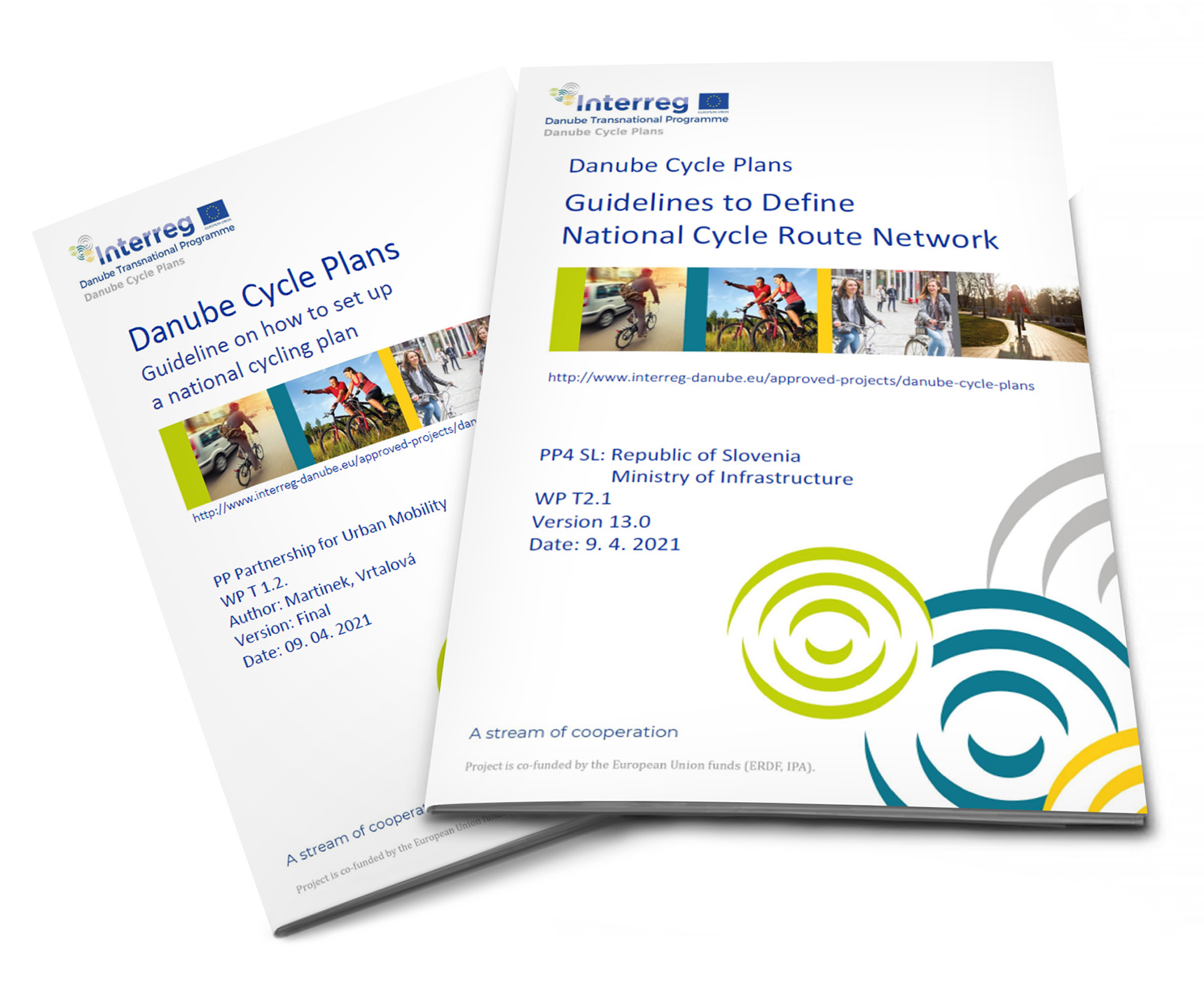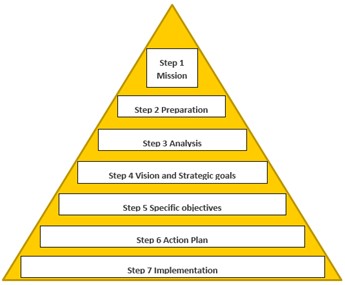Danube Cycle Plans - Guidelines for cycling plans and infrastructure were finished
22-04-2021
Two key methodologies for the development of cycling transport were developed under the Danube Cycle Plans project (DCP). Guidelines to define National Cycle Plans and Guidelines to define a National Cycle Route Network were completed in March 2021. They will be tested by project partners in nine European countries.
 The guideline on the development of national cycling plan/strategy is not just about planning cycling on the national level, it puts humans and their needs in the centre of our attention, it focuses on our lifestyle which significantly affects the climate, energy efficiency, environment and, ultimately, public health too. The main challenge is to adapt the concept to country-specific conditions, while keep all the ambition and avoid inappropriate compromises.
The guideline on the development of national cycling plan/strategy is not just about planning cycling on the national level, it puts humans and their needs in the centre of our attention, it focuses on our lifestyle which significantly affects the climate, energy efficiency, environment and, ultimately, public health too. The main challenge is to adapt the concept to country-specific conditions, while keep all the ambition and avoid inappropriate compromises.
Political responsibilities are the key elements of the process and require much more attention to be paid. The same applies to the communication which just cannot be reduced to a website, or to several awareness raising campaigns.
The process of the elaboration of national plan/strategy consists of the following 7 steps:

Tools are the fundamentals of every cycling strategy:
- Human resources emphasize the fact that nothing can be done without adequate manpower.
- Financial resources emphasize the fact that nothing can be done without the necessary money..
- Data resources - points out the importance of having quality data available, which can help break many walls of misunderstanding and to generate support for the promotion of cycling.
The guideline accompanies countries willing to implement a strategic document to promote cycling on the national level on their way through the jungle of dos and don’ts supported by examples from 20 year of developing, implementing and updating the national cycling strategy of Czechia.
The Ministry of Infrastructure of Republic of Slovenia, one of the project partners, was responsible to elaborate Guidelines to define a National Cycle Route Network (NCRN) in the Danube Cycle Plan project. The assignment was to prepare the document that shall provide guidance for partners and other interested stakeholders through the preparation, development, adoption and implementation phase of the NCRNs. Common project`s guideline ensures that the development of the NCRNs follows a common transnational approach.
The guidelines will be the base document for all other participating project partners to define their national cycling network together with the stakeholders of the National Cycling Working Group (NCWG). Project partners will then work together to draft a Danube Cycling Route Network (DCRN), a macro-regional network of cycle routes of different categories that connects the participating countries in the Danube region.
The cycling route network represents an infrastructure intended for different users and, at the same time, it is an important element of the tourist offer that increases the visibility of an area (e.g. a region, a country). When creating a National Cycle Route Network, one should focus on the cycle routes and the equipment of the national (long-distance) cycling routes and routes both for tourists and for residents who use the same routes for their daily commute.
The steps for the definition of a National Cycle Route Network are:

Both the Guidelines were elaborated based on the following sources:
- Recommendations from the Pan-European master plan for cycling promotion (the recommendations will be signed by transport ministers in Vienna in May 17-18, 2021.
- The toolbox of best available practices from the countries of the pan-European region (available after the adoption of the pan-European Master Plan for Cycling Promotion)
- Fact sheets that were elaborated in the Central MeetBike (CMB) project which was implemented in the CENTRAL EUROPE programme in 2011-2014. The Czech partner was one of the project partners in CMB. The ideas were similar to DCP.
- EU Cycling Strategy. Recommendations for Delivering Green Growth and an Effective Mobility in 2030.
- Recommendations from the European Cyclists´ Federation.
- Existing National Cycling Strategies and Plans: 16 countries in Europe currently have national cycling plans or similar policy documents in place: Austria, Belgium (with Flanders, Wallonia and the Brussels-Capital Region each having their own plan), Czechia, Denmark, Finland, France, Germany, Hungary, Ireland, Luxembourg, Netherlands, Norway, Slovakia, Sweden, Switzerland and the United Kingdom of Great Britain and Northern Ireland (with England, Northern Ireland, Scotland and Wales each having their own plan). Italy, Malta, the Russian Federation, Slovenia and Spain are currently developing such plans.
Both the guidelines are available for download in the section >> Outputs of DCP project <<
